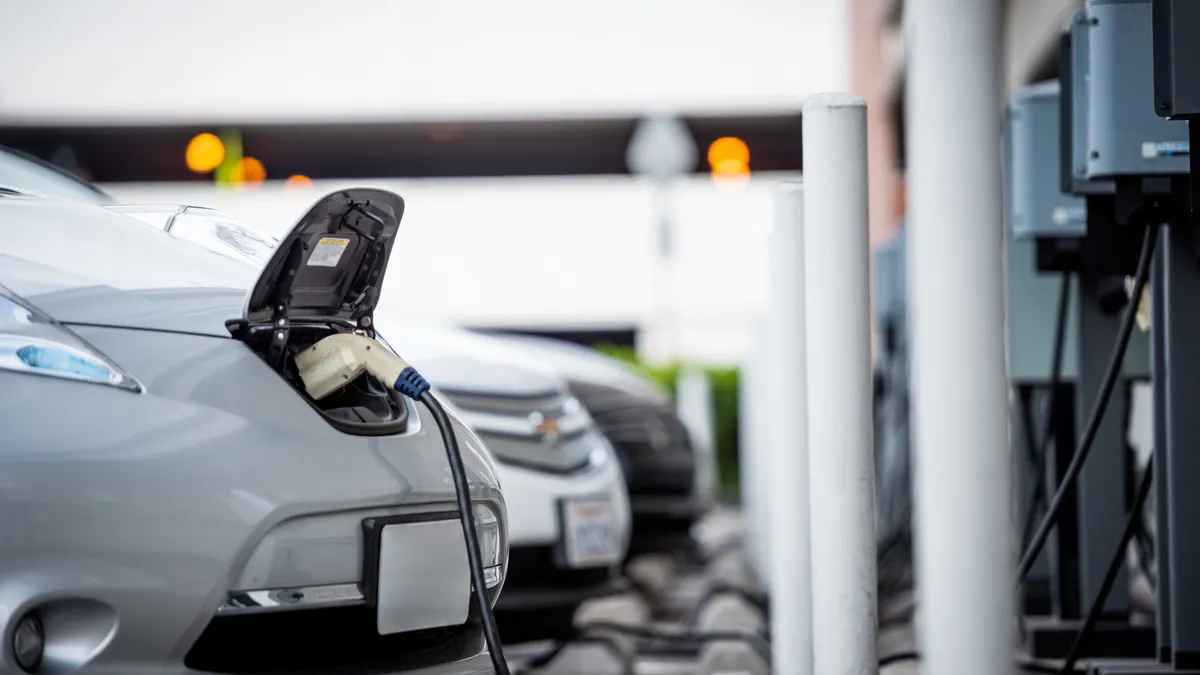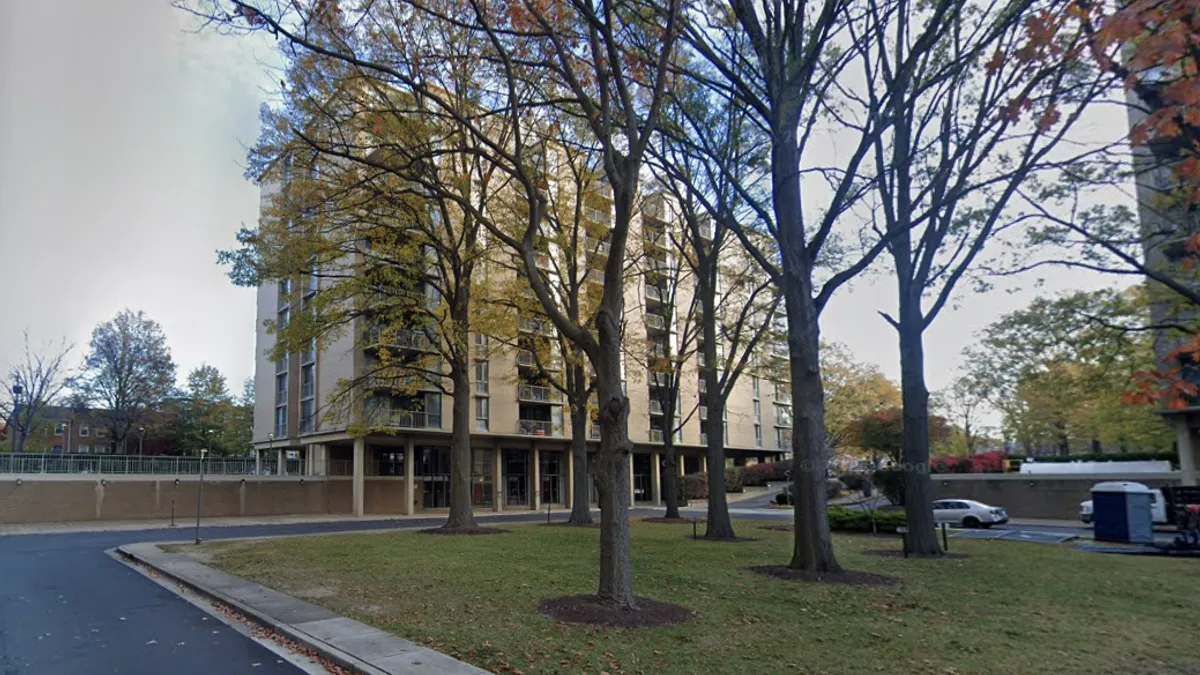Katlyn Garside is a sustainability expert at Cleveland-based energy brokerage Integrity Energy. Opinions are the author’s own.
President-elect Donald Trump’s election win has caused concern about the future of federal tax incentives for renewable energy and efficiency upgrades.
As recently as September, Trump promised to rescind unspent funding from the Inflation Reduction Act and the Infrastructure Investment and Jobs Act. In doing so, his administration would effectively halt any future disbursements of federal funding for clean energy.
Fortunately, this isn’t an act that he can repeal on his own. He will have to coordinate his efforts with Congress to roll back funding.
While the future of clean energy tax incentives is a bit murky, property developers still have time to improve their current projects with clean energy upgrades. After all, Trump can only rescind what is still available in the budget. He can’t take money back from citizens and businesses after it’s been allocated.

While the president-elect says he wants to divest from renewable energy, many conservative regions were actually the biggest beneficiaries of clean tax incentives. A recent report by market research company E2 highlights the impact of the IRA’s incentives by state, sector and industry as well as congressional districts.
This report found that nearly 60% of announced projects funded by the IRA are in Republican congressional districts. With this much economic growth in areas that deeply support the Trump administration, we can only hope plans to repeal the IRA and clean energy incentives will fizzle out.
Types of tax credits
No matter what the future holds, if you plan to implement energy efficiency upgrades or install renewable energy systems on your properties in 2024, now is the time to act. For the remaining months of the Biden administration, officials are working to approve as much clean energy funding as possible.
By reducing operational costs and environmental impact, these tax incentives allow developers to future-proof their properties while improving both profitability and tenant satisfaction. Some of the biggest green energy tax credits include:
Investment Tax Credit: The ITC helps reduce the federal income tax liability by up to 30% of the cost to install a renewable energy system. Only newly installed equipment qualifies for this credit and it must be installed during the same calendar tax year you apply for. Fortunately, the ITC covers a wide variety of clean energy technologies, encouraging many ways to make developments more sustainable.
Technologies eligible for the ITC include:
- Solar photovoltaic panels, including their inverters, racking, system balancing equipment and sales taxes associated with these purchases.
- Concentrated solar power, including any equipment necessary to generate electricity, heat/cool a building or provide solar process heat.
- Geothermal systems, including heat pumps and direct use systems.
- Wind power systems, including microturbines and full-scale models.
- Bioenergy, including biomass and biofuel systems.
- Combined heat and power systems.
- Step-up transformers, circuit breakers and surge arrestors.
- Energy storage devices with greater than 5 kilowatt-hours of capacity.
- Installation and labor expenses.
Production Tax Credit: The PTC is available for properties and buildings that have already integrated renewable energy technologies. It provides a per kilowatt-hour tax credit for electricity generated by solar and other qualifying technologies. The PTC reduces federal tax liability for 10 years after the installation of renewable energy systems.
Technologies eligible for the PTC include:
- Solar energy systems, including PV panels and CSP systems.
- Bioenergy systems, including biomass and biofuel.
- Geothermal electric generation systems.
- Tidal, marine and hydrokinetic systems.
- Wind power systems.
- Hydroelectric power systems.
Thanks to the Inflation Reduction Act, the ITC and PTC are both transferable. While historically nontransferable, this policy change eliminates some of the barriers for large scale renewable energy projects.
According to the Department of Energy, the ITC and PTC can be transferred once to an unrelated taxable entity in exchange for money. The goal of transferability is to simplify the process of financing large-scale renewable energy projects.
Energy-Efficient Commercial Buildings Deduction (IRC 179D): Owners of multifamily housing properties can also apply for a wide variety of tax deductions by implementing energy-efficient building upgrades. This tax deduction, also known as IRC 179D, offers tax deductions up to $5 per square foot for projects that reduce energy consumption. To qualify, your building must reduce its energy use by at least 25%.
Building upgrades eligible for IRC 179D include:
- Interior lighting systems, including LED lighting, occupancy sensors and other automation tools.
- HVAC & water heater upgrades, including energy-efficient models, geothermal heat pumps, smart thermostats and other automation tools.
- Building envelope upgrades, including energy-efficient windows and doors, insulation upgrades and roofing upgrades.
Clean Vehicle Tax Credit: The Clean Vehicle Tax Credit is rooted in the Inflation Reduction Act. This incentive helps offset the cost of investing in electric vehicles or EV infrastructure, like charging stations. This is an advantageous tax credit for property developers making the switch to an electric vehicle fleet. It’s also highly beneficial for offsetting the cost of EV charging stations.
Eligible technology for clean vehicle tax credits includes:
- Electric vehicles. Commercial fleets can receive up to $7,500 for each small EV purchased. EVs over 14,000 lbs., like semis or buses, can receive up to $40,000 per qualifying vehicle.
- EV charging stations. Businesses investing in EV charging infrastructure can offset up to 6% of the total equipment costs, or a maximum of $100,000.
State and local incentives: In addition to federal tax credits, there are state and local clean energy incentives available as well. State governments and local utility companies also offer tax credits, rebates, and grants to encourage renewables and efficiency upgrades. No two states are alike, so you can explore available incentives through the Database of State Incentives for Renewables and Efficiency.
Pursuing renewable energy and efficiency upgrades is essential for property developers seeking to reduce environmental impact and improve property value. By leveraging federal, state and local incentives, developers can offset installation costs and improve the ROI of their projects.
Clean energy tax credits make it easier than ever to integrate sustainable technologies, benefiting both current operations and long-term business growth. Investing in clean energy technologies not only future proofs your properties, but also attracts long-term eco-conscious tenants while offering them more affordable energy bills.


















